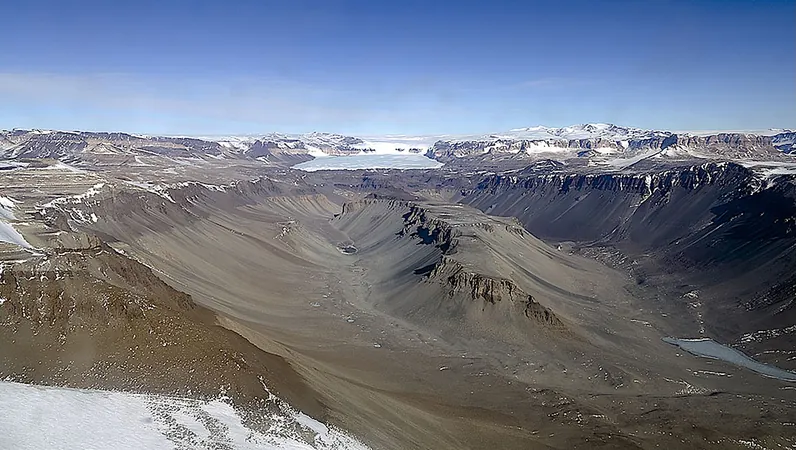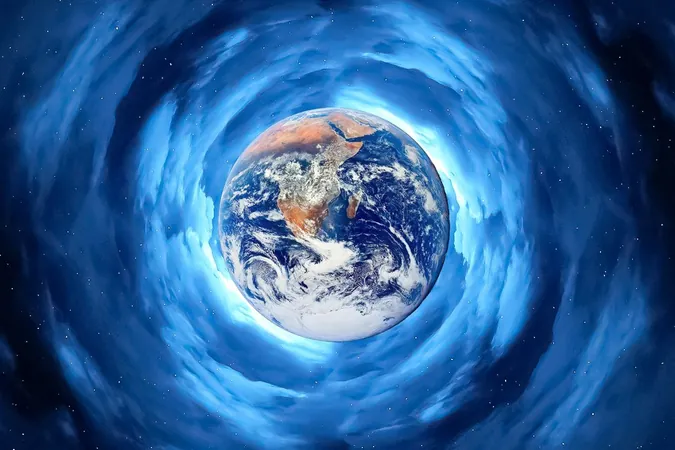
Unlocking the Secrets of Ancient Microbial Life in Antarctica's Dry Valleys
2025-09-01
Author: William
Unearthing the Mysteries of Dry Valleys Microbes
The McMurdo Dry Valleys in Antarctica, known for their extreme conditions, might conceal a treasure trove of microbial diversity beneath their surface. However, the secrets of subsurface microorganisms in permafrost and their role in revealing ancient ecosystems have remained largely untapped.
A Spotlight on Ancient Habitats
In groundbreaking research, scientists have delved into the microbial life within the permafrost of lower Wright Valley, dating back 7,000 to 25,000 years, and Pearse Valley, which boasts a staggering age of over 180,000 years. Employing innovative decontamination methods alongside advanced DNA extraction and 16S ribosomal RNA amplification sequencing, they mapped the intricate microbial community structures that dwell in these ancient habitats.
Surface vs. Subsurface: A Tale of Two Communities
The team discovered significant disparities between surface microbial communities and their subsurface counterparts in both valleys. These differences highlight that the environmental conditions during the time of microbial colonization were distinctly varied, giving rise to unique communities. Remarkably, specific microbial taxa thrived in subsurface permafrost but were absent from surface soil, indicating the existence of an ancient and isolated ecosystem.
Challenges in the Friis Hills
Conversely, attempts to unveil microbial life in the high-elevation Friis Hills, which date back over six million years, yielded unexpected results. The failure to identify DNA using standard amplicon sequencing aligns with previous studies that revealed a stark absence of microbial habitability in these cold, arid environments. This discovery underlines the potential for significant microbial populations in less extreme conditions, both on Earth and possibly on Mars, where similar scenarios may unfold.
Looking Ahead: The Future of Microbial Research
This research not only uncovers vital insights into ancient microbial communities on Earth but also opens the door for future explorations of microbial life beyond our planet. As scientists continue to refine their methods, the quest to explore microbial diversity in extreme environments promises to unlock further secrets of our planet's past—and potentially, the past of other worlds.









 Brasil (PT)
Brasil (PT)
 Canada (EN)
Canada (EN)
 Chile (ES)
Chile (ES)
 Česko (CS)
Česko (CS)
 대한민국 (KO)
대한민국 (KO)
 España (ES)
España (ES)
 France (FR)
France (FR)
 Hong Kong (EN)
Hong Kong (EN)
 Italia (IT)
Italia (IT)
 日本 (JA)
日本 (JA)
 Magyarország (HU)
Magyarország (HU)
 Norge (NO)
Norge (NO)
 Polska (PL)
Polska (PL)
 Schweiz (DE)
Schweiz (DE)
 Singapore (EN)
Singapore (EN)
 Sverige (SV)
Sverige (SV)
 Suomi (FI)
Suomi (FI)
 Türkiye (TR)
Türkiye (TR)
 الإمارات العربية المتحدة (AR)
الإمارات العربية المتحدة (AR)